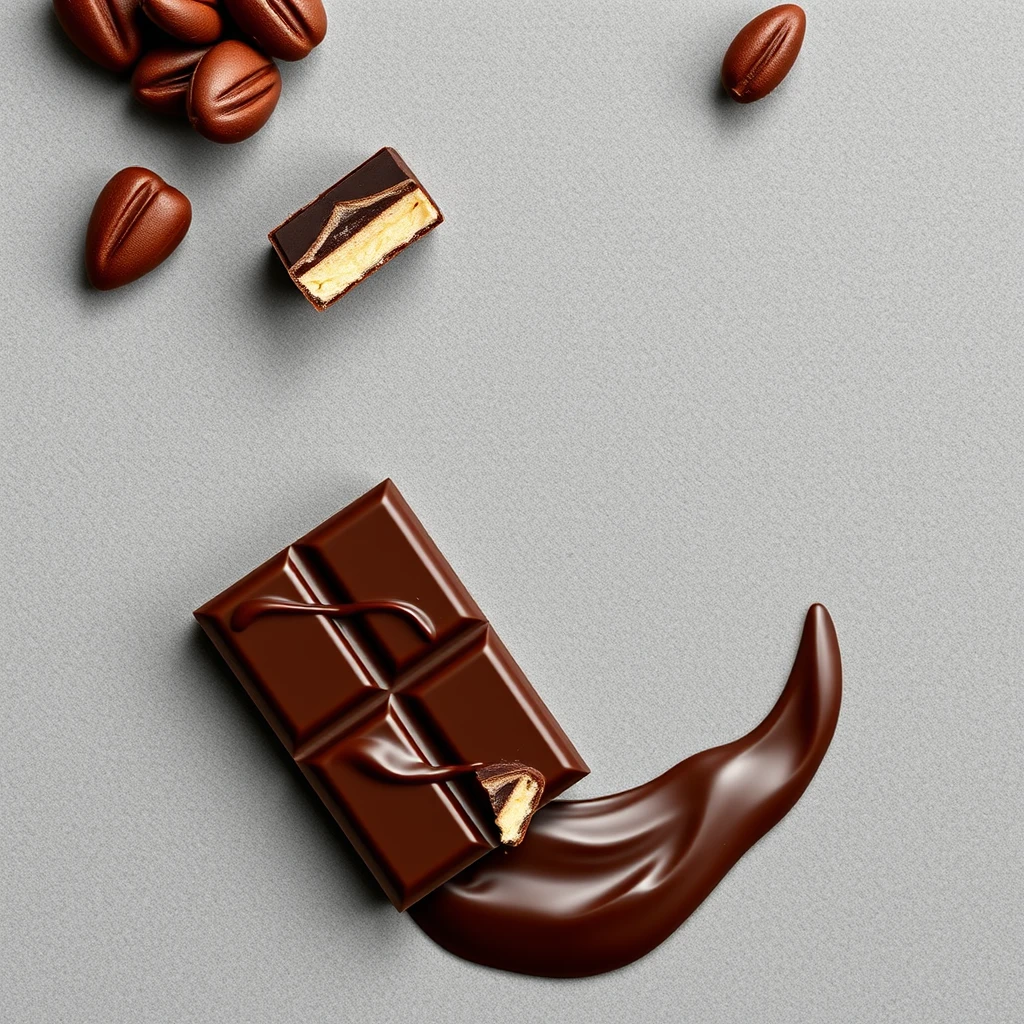Imagem de IA Criada pelo Flux AI Image Generator

Prompt
Make me an image that illustrates this technical sheet: 1. Definition and origin - Etymology and history • Origin of the word "chocolate" (xocolatl in Nahuatl) • Use by the Maya and the Aztecs - Classification in the pastry field • Basic ingredient in pastry • Category: cocoa derivative - Varieties and types • Dark, milk, white • Cocoa percentages (70%, 85%, etc.) 2. Composition and properties - Molecular structure • Composed of cocoa butter, cocoa mass, sugar • Cocoa butter crystals (polymorphism) - Physicochemical characteristics • Melting point: 30-32°C • Sensitive to temperature and humidity - Nutritional value • Rich in antioxidants (flavonoids) • About 550 kcal/100g for 70% dark chocolate 3. Uses in pastry - Classic applications • Ganaches, mousses, glazes • Coating, molding - Functional role • Provides flavor and texture • Structural agent (when tempered) - Dosages and proportions • Chocolate/cream ratio for ganache: 2:1 • Percentage in mousses: 25-35% 4. Basic techniques - Preparation methods • Tempering (temperature curve) • Melting in a double boiler - Specific equipment • Precision thermometer • Marble for manual tempering - Professional tips • Avoid any contact with water • Temper on 2/3 of the total mass 5. Precautions and storage - Hygiene and safety standards • Temperature control for storage • Avoid cross-contamination - Optimal storage conditions • Temperature: 15-18°C • Relative humidity: 50-55% - Shelf life and signs of alteration • 12-18 months for dark chocolate • Whiteness (fat bloom) is a sign of alteration 6. Innovations and trends - New processes • Ultrasonic tempering • 3D printing in chocolate - Alternatives and substitutes • Ruby chocolate • Sugar-free versions - Evolution perspectives • Chocolates with specific functions (health, sports) • Controlled fermentation of beans
Análise de Imagem
Análise Emocional
Cenários de Aplicação
Chocolate Learning Workshops
Descrição: Educational seminars on chocolate craft
Uso Potencial: Utilizing the technical sheet to teach the history and techniques of chocolate preparation.
New Pastry Recipes Development
Descrição: Product development in the pastry industry
Uso Potencial: Implementing chocolate varieties and properties in creating innovative dessert recipes.
Sensory Experience Events
Descrição: Chocolate tasting and pairing events
Uso Potencial: Utilizing nutritional information and chocolate characteristics to enhance tasting experiences.
Professional Chocolate Making Training
Descrição: Chocolate production training
Uso Potencial: Training professionals in chocolate tempering and other techniques.
Quality Control Protocols
Descrição: Quality assurance in chocolate manufacturing
Uso Potencial: Incorporating hygiene and storage practices into manufacturing guidelines.
Análise Técnica
Avaliação de Qualidade: The technical sheet effectively covers key aspects of chocolate, but could be enhanced with additional detailed examples.
- Comprehensive classification of chocolate varieties
- In-depth look at physicochemical properties
- Focused discussion on practical applications in pastry
- Clear presentation of storage and safety standards
- Expand on the health benefits of each chocolate type
- Include visuals for molecular structures
- Add more examples of modern applications in pastry
- Detail the impact of alternatives on flavor profiles